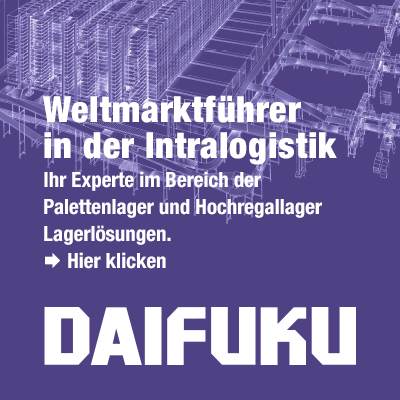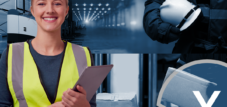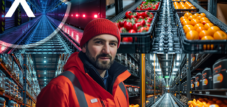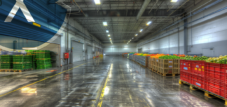Green cold chain: Strategies for more environmentally friendly refrigeration and deep-freeze storage in global logistics and industry
Language selection 📢
Published on: November 2nd, 2024 / Update from: November 2nd, 2024 - Author: Konrad Wolfenstein
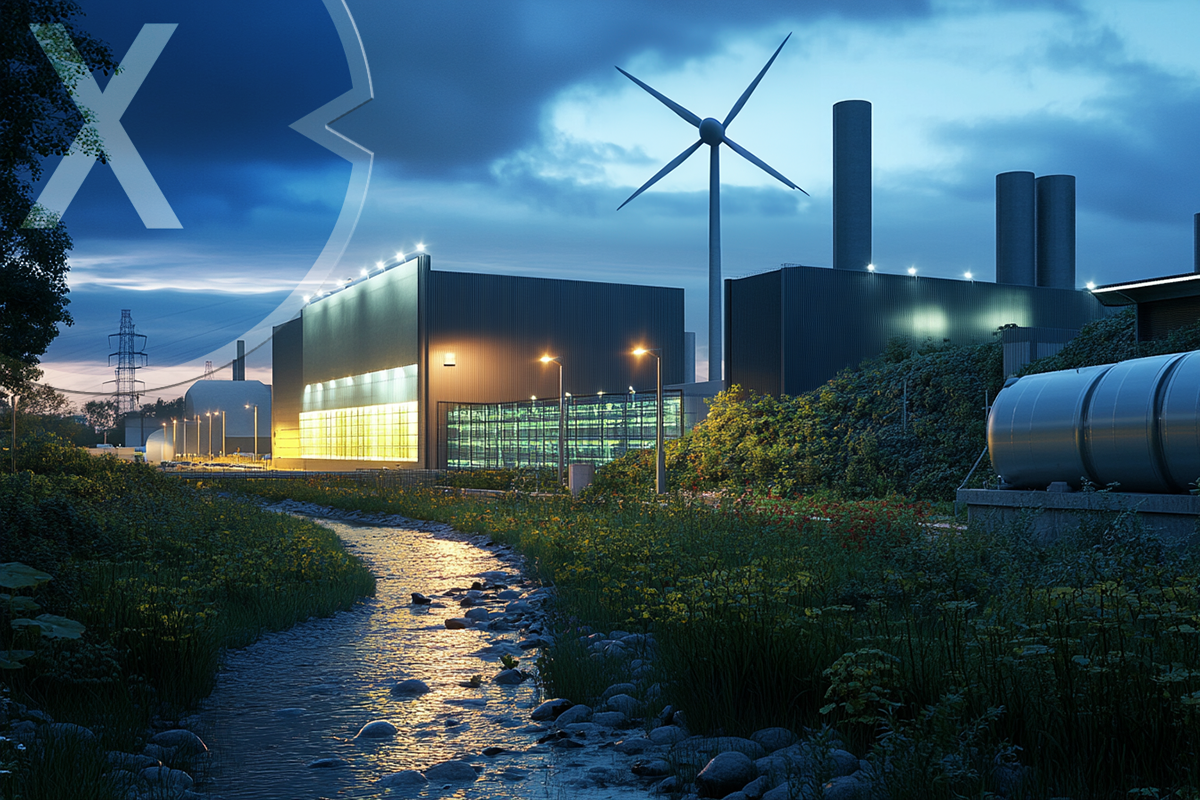
Green cold chain: Strategies for more environmentally friendly refrigerated and frozen logistics in global logistics and industry - Image: Xpert.Digital
🟢❄️🚛 Green cold chain: Environmentally friendly strategies for cold and deep-freeze storage in global industrial logistics
🌐⛓️📦 The importance of the cold chain in logistics
The cold chain plays a crucial role in modern industrial logistics as it enables the transport and storage of temperature-dependent products. The cold chain extends across various industries, particularly in the food and pharmaceutical industries, where the freshness and effectiveness of the products must be guaranteed. However, with the growing awareness of environmental and climate protection, the logistics industry is facing new challenges. A “green” cold chain – i.e. sustainable and environmentally friendly refrigerated and frozen logistics – is becoming increasingly important. Companies worldwide are looking for innovative strategies to minimize CO₂ emissions and make energy consumption efficient without compromising the integrity of products.
🌍❄️🍃 Environmental impact of the conventional cold chain
Traditional cold chain solutions use refrigerants such as chlorofluorocarbons (CFCs) and hydrofluorocarbons (HFCs), which are powerful greenhouse gases and contribute to global warming. Refrigerants are necessary to keep cooling systems at low temperatures, but they often escape when systems leak or during maintenance. Some of these gases are up to 10,000 times more harmful to the climate than CO₂. The international industry has begun to rethink the use of such refrigerants and develop alternatives to reduce emissions.
Another problem is the high energy consumption of conventional cooling systems. Cooling requires immense amounts of electricity, especially when products are transported over long distances. According to studies, a significant proportion of global electricity consumption comes from cold storage and refrigerated transport. The pressure to reduce this consumption is increasing in the face of climate change, which is why alternative and sustainable technologies are increasingly coming into focus.
🚀🧊🌱 Strategies for an environmentally friendly cold chain
An environmentally friendly cold chain is based on an integrative approach that takes various aspects into account - from the choice of refrigerants to the energy source to the optimization of refrigeration logistics. Below are some strategies that promote a “green” transformation of the cold chain.
1. Using natural refrigerants
A crucial step towards an environmentally friendly cold chain is the use of natural refrigerants such as ammonia, CO₂ and propane. These substances have a low global warming potential and are significantly more environmentally friendly compared to synthetic refrigerants. Ammonia, for example, has a near-zero global warming potential and is well suited for large industrial refrigeration systems. However, switching to natural refrigerants requires adaptation of technology and appropriate safety precautions, as some of these substances can be flammable or toxic.
2. Energy efficiency through modern cooling technology
Innovative cooling technologies such as high-performance insulation, heat recovery and improved airflow control can significantly reduce energy consumption. Heat recovery systems, for example, use the heat generated during cooling to heat other areas of the logistics center or for other processes. This technology helps save energy and reduce CO₂ emissions. Modern, energy-efficient cooling systems can reduce electricity consumption by up to 40%, which has a positive impact on the company's environmental footprint.
3. Integration of renewable energy
An important aspect of the sustainable cold chain is the use of renewable energy sources such as solar energy and wind power. Solar panels on the roof of cold storage facilities can provide the majority of the electricity needed, especially in sunny regions. By using renewable energies, companies can reduce their CO₂ emissions while reducing operating costs in the long term. The combination of wind energy and battery storage is also becoming increasingly important to ensure a continuous supply of electricity, even if natural energy production fluctuates.
4. Digitalization and intelligent control systems
Digitalization plays a crucial role in optimizing the cold chain. Sensors and IoT technologies enable precise monitoring and control of temperature along the entire supply chain. Real-time data and intelligent algorithms help to detect temperature deviations at an early stage and take countermeasures in a timely manner. Such a system makes it possible to make energy consumption more efficient by avoiding unnecessary cooling. Digitalization also makes it possible to optimize maintenance cycles so that the systems can be operated more efficiently and with a longer service life.
5. Optimization of transport logistics
The cold chain includes not only the storage but also the transport of goods. Optimizing transport routes and reducing empty runs are important measures to minimize CO₂ emissions. The use of electric trucks and alternative drive technologies can help significantly reduce environmental impact. In addition, optimized route planning reduces fuel consumption, which is both ecologically and economically advantageous.
6. Cascade cooling and innovative cooling concepts
Another concept for the sustainable cold chain is so-called cascade cooling. This is a multi-stage cooling system in which different refrigerants are used for different temperature ranges. This system enables greater energy efficiency and is particularly suitable for large warehouses that rely on different temperature zones. Such systems make it possible to save the energy required for lower temperatures by efficiently transferring the cold from a higher temperature zone.
🏢💡🌿 Advantages of green cold chain for companies
Switching to a green cold chain offers not only ecological but also economic advantages. On the one hand, companies can reduce their operating costs through energy-efficient technologies and the use of renewable energy. On the other hand, a sustainable profile strengthens the brand image and helps to gain consumer trust. Especially in times when consumers are paying more and more attention to environmentally friendly companies, the green cold chain can represent a unique selling point.
In addition, it is possible to receive funding and government subsidies by using environmentally friendly technologies and reducing CO₂ emissions. In many countries, companies are financially supported if they take sustainable measures, which makes switching to a green cold chain even more attractive.
🔧🚀📈 New technical standards and staff training
Despite the numerous benefits, companies face some challenges when implementing a green cold chain. In many cases, switching to natural refrigerants and energy-efficient technologies requires high initial investments. Adapting to new technical standards and training staff are also crucial factors.
Nevertheless, it is foreseeable that the need for environmentally friendly cold chain solutions will continue to increase in the coming years. Global climate policy and increasing regulatory requirements are putting pressure on companies to improve their carbon footprint. Technological development in this area is progressing rapidly and regularly produces new, more sustainable solutions. Companies that invest in green cold chains early on can achieve both competitive and economic advantages in the long term.
📜🌱🌍 Future-oriented strategy
The green cold chain represents a future-oriented strategy for overcoming the challenges of global logistics with regard to sustainability and climate protection. By using natural refrigerants, energy-efficient technology and digital control systems, companies can significantly reduce their CO₂ emissions. The increased use of renewable energies and the optimization of transport logistics also make an important contribution to an environmentally friendly supply chain. The switch to a green cold chain
📣 Similar topics
- 🥶 Green cold chain: Sustainability meets refrigerated and frozen logistics
- 🌍 Importance of Cold Chain: Global Food Safety Standards
- ⚡ Energy efficiency: Modern technologies to reduce power consumption
- 📦 Optimized logistics: Sustainable transport in the cold chain
- 🌱 Environmentally friendly refrigerants: Natural options for less CO₂
- 💡 Renewable energies: solar systems and wind power in cooling systems
- 🤖 Digitalization: Smart solutions for more efficient cold chains
- 🔍 Challenges: The path to implementing environmentally friendly systems
- 📈 Economic advantage: Reduce costs through green technologies
- 🌐 Future prospects: Visions for sustainable cold chain logistics
#️⃣ Hashtags: #GreenColdChain #EnergyEfficiency #SustainableLogistics #RenewableEnergy #DigitalSolutions
Xpert partner in warehouse planning and construction
🌍❄️ Green cold chains in global logistics: Paths to sustainability
🍃📦 The cold chain is an indispensable part of global logistics. It ensures that temperature-sensitive goods such as food, medication and chemical products are stored and transported under optimal conditions. Without a reliable cold chain, many products would lose their quality or become unusable. But traditional refrigerated and frozen logistics come with significant environmental impacts. High energy consumption, the use of climate-damaging refrigerants and inefficient processes contribute significantly to global greenhouse gas emissions. With increasing awareness of climate change and the urgent need to reduce CO₂ emissions, the industry is faced with the challenge of making the cold chain more sustainable.
♻️🌡️ The environmental impact of the traditional cold chain
The energy consumption of cooling systems accounts for a significant proportion of global energy consumption. It is estimated that refrigeration and freezing systems account for around 17% of total industrial electricity consumption. Particularly in the food industry, where products often have to be transported and stored over long distances, the energy required for cooling is immense. In addition, many cooling systems still use fluorinated refrigerants (F-gases), which have a high global warming potential. These substances can warm the climate a thousand times more than CO₂. If they enter the atmosphere through leaks or improper disposal, they contribute significantly to global warming.
🌿🚛 Strategies for a greener cold chain
In order to make the cold chain more environmentally friendly, different approaches must be taken:
1. Use of natural refrigerants
Natural refrigerants such as ammonia (NH₃), carbon dioxide (CO₂) and hydrocarbons (e.g. propane) have a significantly lower global warming potential than synthetic refrigerants. They are also often more efficient and can increase the energy efficiency of cooling systems. Ammonia, for example, has excellent thermodynamic properties and has been used in industrial cooling systems for over 100 years. “Switching to natural refrigerants is an important step in reducing our ecological footprint,” emphasizes an industry representative.
2. Increasing energy efficiency
By using modern technologies and optimizing cooling systems, energy consumption can be significantly reduced. Highly efficient compressors, heat recovery systems and improved insulation materials help reduce energy requirements. Regular maintenance and inspection of the systems ensures that they always work optimally. Variable frequency converters can also be used to adapt the performance of the systems to actual requirements.
3. Use of renewable energy
Integrating renewable energy sources such as solar or wind energy into the power supply of cooling systems can significantly reduce the carbon footprint. Solar cooling offers great potential, particularly in sunny regions. By installing photovoltaic systems on the roofs of warehouses, companies can cover part of their energy needs themselves. “The combination of cooling and renewable energies is a pioneering approach to sustainable logistics,” explains an expert in renewable energies.
4. Optimization of logistics and supply chain
Through intelligent planning and optimization of transport routes, cooling times can be reduced and energy can therefore be saved. Digital tools and IoT technologies enable better monitoring and control of the cold chain. Real-time data about traffic, weather and inventory levels can be used to optimize transport routes and minimize downtime. Additionally, bundling supplies and collaborating with supply chain partners can help achieve efficiency gains.
5. Implementation of energy management systems
Energy management systems (EnMS) help companies to systematically record, analyze and optimize their energy consumption. By identifying energy saving potential, targeted measures can be taken. ISO 50001 certifications can also underscore a company’s commitment to energy efficiency and sustainability.
6. Awareness and training
Training staff on energy efficient practices and handling cooling systems can also result in savings. Employees should be made aware of the importance of energy efficiency and trained in how to use energy saving functions. “Our employees are a crucial factor in the success of our sustainability strategy,” said a company spokesman.
💡🆕 Innovative technologies and solutions
Advancing digitalization offers new opportunities to make the cold chain more efficient and environmentally friendly. Sensors and IoT devices enable real-time monitoring of temperature, humidity and other relevant parameters. Big data and artificial intelligence can be used to create forecasts and optimize systems. For example, machine learning can be used to predict the energy consumption of cooling systems and avoid load peaks.
In addition, intelligent packaging solutions are increasingly being developed that not only protect the products, but also help regulate temperature. Phase change materials (PCM) can absorb or release heat, keeping the temperature constant. This reduces the need for active cooling during transport.
📜🌐 Regulatory framework and international standards
Politics plays a crucial role in promoting environmentally friendly technologies. Stricter refrigerant regulations and energy efficiency standards are encouraging companies to implement more sustainable solutions. The Kigali Agreement to the Montreal Protocol provides for the gradual reduction of the production and use of fluorinated refrigerants. In the European Union, the F-Gas Regulation regulates the phase-out of climate-damaging refrigerants.
There are also international standards and certifications that support companies in implementing sustainability strategies. ISO 14001 for environmental management systems and ISO 50001 for energy management systems are examples of this.
📊🥇 Case studies from practice
A leading food company has implemented a comprehensive energy management program in its warehouses. By using LED lighting, highly efficient cooling systems and the use of waste heat, the company was able to reduce its energy consumption by 30%. “Our investments in energy efficiency pay off not only ecologically but also economically,” reports the sustainability officer.
Another example is a pharmaceutical company that relies on innovative cooling technologies to store temperature-sensitive medications. By using refrigerators with natural refrigerants and integrating solar energy, the company was able to significantly reduce its CO₂ emissions.
🔍🌟 Challenges and outlook
Despite the available technologies, companies face implementation challenges. High investment costs, a lack of infrastructure and a lack of know-how can pose hurdles. In addition, there is often uncertainty regarding the reliability and safety of new technologies. Collaboration and exchange of knowledge in the industry are required here.
In the long term, however, green cold chains offer not only ecological but also economic advantages. Energy savings and efficient processes lead to cost reductions and strengthen competitiveness. Consumers and business partners are placing increasing value on sustainability, which can lead to a positive image and market advantages.
✅🌱Redesign of the cold chain towards more sustainability
Transforming the cold chain towards greater sustainability is an urgent necessity and at the same time an opportunity for the industry. Significant progress can be achieved through the use of natural refrigerants, increasing energy efficiency and integrating renewable energies. Innovations and technological developments offer a wide range of possibilities. Ultimately, not only the environment but also the companies themselves benefit from a green cold chain. It is up to all stakeholders – from manufacturers to logistics companies to political decision-makers – to develop and implement solutions together. Because a sustainable cold chain is a crucial building block for a more environmentally friendly future.
📣 Similar topics
- 🌍 The future of green cold chain technology
- ❄️ Energy efficient innovation strategies for cold chains
- 🍃 Natural refrigerants as the key to sustainability
- 🌞 Renewable energies are revolutionizing the cold chain
- 🚛 Optimized logistics processes for less environmental impact
- 📊 Digitalization: The game changer in the cold chain
- 🌊 Fluid management: Environmentally friendly refrigerants
- 🏭 Industry 4.0: Intelligent solutions for the cold chain
- 📈 Energy management systems as a pioneer for green cold chains
- 🤝 Collaboration for a more sustainable cold chain
#️⃣ Hashtags: #Cold Chain #Sustainability #Energy Efficiency #NaturalRefrigerants #RenewableEnergy
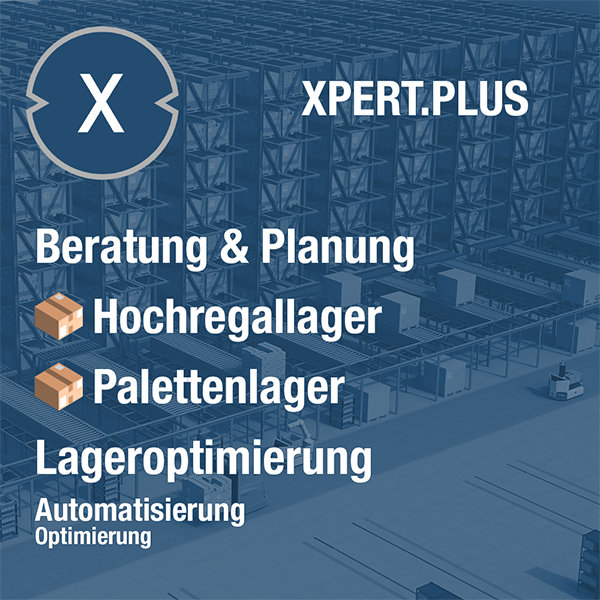
Xpert.Plus warehouse optimization - high-bay warehouses such as pallet warehouses consulting and planning
We are there for you - advice - planning - implementation - project management
☑️ Smart City & Factory: Industry expert for energetic 5G buildings and halls as well as advice and installation of solar systems
☑️ Xpert.Plus - logistics consulting and logistics optimization
☑️ Industry expert, here with his own Xpert.Digital Industry Hub with over 2,500 specialist articles
I would be happy to serve as your personal advisor.
You can contact me by filling out the contact form below or simply call me on +49 89 89 674 804 (Munich) .
I'm looking forward to our joint project.
Xpert.Digital - Konrad Wolfenstein
Xpert.Digital is a hub for industry with a focus on digitalization, mechanical engineering, logistics/intralogistics and photovoltaics.
With our 360° business development solution, we support well-known companies from new business to after sales.
Market intelligence, smarketing, marketing automation, content development, PR, mail campaigns, personalized social media and lead nurturing are part of our digital tools.
You can find out more at: www.xpert.digital - www.xpert.solar - www.xpert.plus



